It’s time to give up the office ping pong table, writes Angela Ferguson. Why, you may ask? Because one of the imperatives of the modern workplace is to question the purpose behind each design choice. Read on…

August 15th, 2022
You may have seen images of slippery slides at the Google headquarters, or Red Bull’s breakout rooms with games consoles and televisions, and enviously wondered why your company didn’t invest in such playful and innovative workplace designs.
However, not all that looks exciting on the surface is functional to our workplaces nor does it drive engagement, particularly once the novelty wears off.
The hybrid world has changed the role of the office, as employees endeavour to achieve collaborative work and hybrid meetings when amongst their colleagues, whilst saving focused work for home.
Organisations now need to consider how they can best design an engaging and purpose-filled workplace that both encourages employees into the office and attracts new talent looking to work in a stimulating environment.
It is crucial for modern workplaces to strike the balance between innovation and relevance, questioning the purpose behind each design choice. Office design that aligns with a company’s values and functionality, while driving employee wellbeing and comfort, will ultimately come out on top in the future of work.
Related: Comfort and space at the heart of today’s workplace

Prior to the pandemic we saw leading companies, particularly within the tech industry, draw on a range of gimmicks to differentiate themselves and entice new talent. This included sleeping pods, bean bags, grass floors, disco tunnels, fireman’s poles, beer taps, mini golf courses and ping pong tables.
While these design features may offer a fun alternative to traditional office spaces, they can lack purpose, blurring the lines between work and pleasure, or going unused after the initial appeal lessens (apart from perhaps the beer tap!).
Additionally, whilst many workplaces provide these features, leadership and culture may not necessarily support their use throughout the working day. Not to mention how disruptive it is for others to hear a table tennis game at full pace whilst trying to work!
Now as people return to the office under a new hybrid rhythm, the meaning and purpose of the office has fundamentally changed.
Employees predominantly want meaningful collaboration and social connections when they are in the office, often leaving the focus or admin work for their days when working from home or other spaces.
This has required many companies to re-evaluate their spaces, prioritising innovation, purpose and functionality like never before.
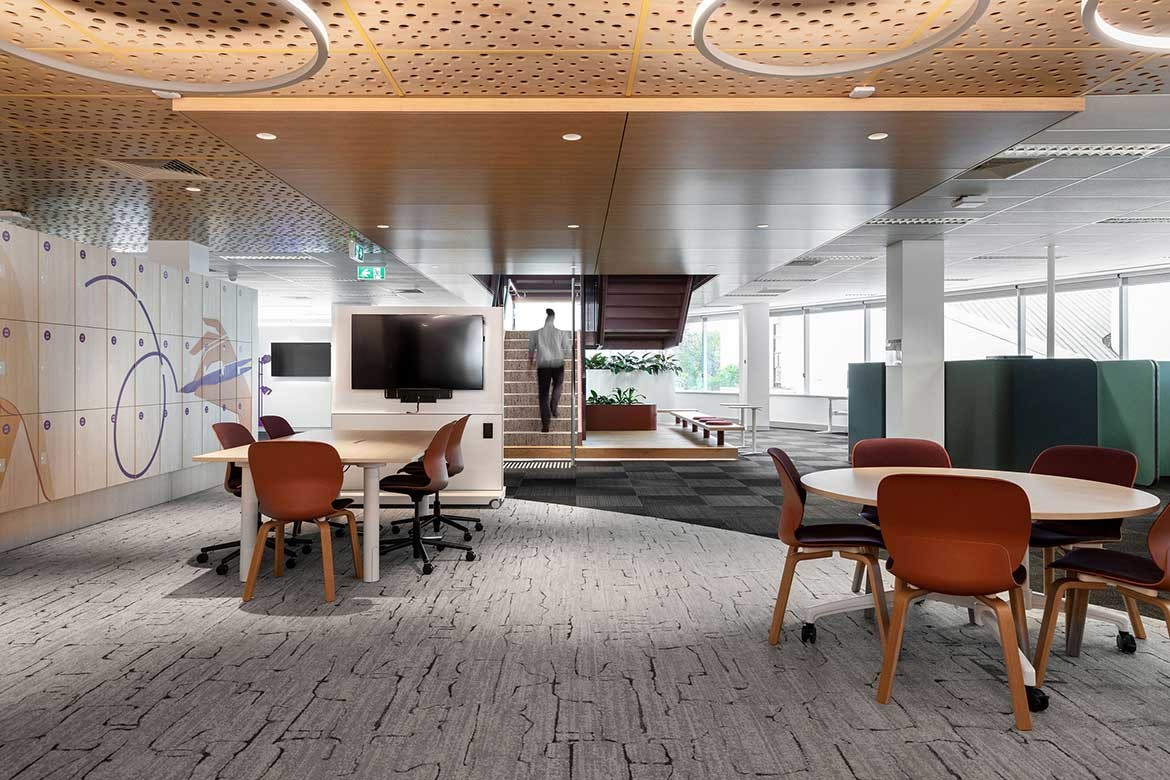
Purpose-driven design
A well-designed and appealing workspace will support employees to work from the office and attract new talent; in the post-COVID landscape people want to work in an environment that provides connection, inspiration and something more than they can get from home.
Intelligent office design is about ensuring each design feature has a purpose beyond just aesthetics.
Aligning with brand is also an important consideration in design – not simply the aesthetic, but the behaviours and cultural norms that make up the specific social fabric of a corporate community.
Airbnb in San Francisco, for example, drew on the purpose of its business, which is to provide rentals for people throughout the world. Its brand is urban and global and centred around the concept of ‘hosting’.
Its office environment references cities from around the world, and includes collaborative spaces that are diverse, flexible and unique. Meeting rooms are soundproofed and designed for teams to work together and to feel stimulated. This has been a successful use of innovative design because it is both engaging and functional for employees.
Additionally, the office interiors use everyday materials, like timber, concrete and glass, along with planting, greenery and organic forms to help reduce stress levels and have a positive impact on the well-being of the employees
By integrating the purpose of its business into the design of the office space, Airbnb has created design features that are intentional rather than gimmicky.

Intention matters
Google’s headquarters were designed to include a range of fun elements such as ping pong tables, swings, and slides in lieu of stairs.
While this aligns with Google’s ethos of creativity and teamwork, employees at Google noted that they only used the slides on their first day (and they only travel in one direction) and that the ping pong tables didn’t necessarily contribute to productivity.
It is important for modern workplaces to consult with their employees around what they desire in the office and to design with intention, rather than be driven by aesthetics alone; finding the right balance between these two things will make a workplace attractive, engaging and highly functional.
In the post pandemic landscape of work, an office environment needs to support both collaborative and focused activities, along with the critical driver of social connection that many have been missing.
Angela Ferguson
Additionally, a workplace will have a mix of neurotypical people and neurodivergent thinkers; designing for people who are easily overwhelmed or overstimulated, as well as those who thrive on social interaction is also critical.
As we move forward into a world of work that is purpose driven and fulfilling, the spaces we inhabit need to also align, going beyond gimmick and aesthetic to be both intentional and inspiring.
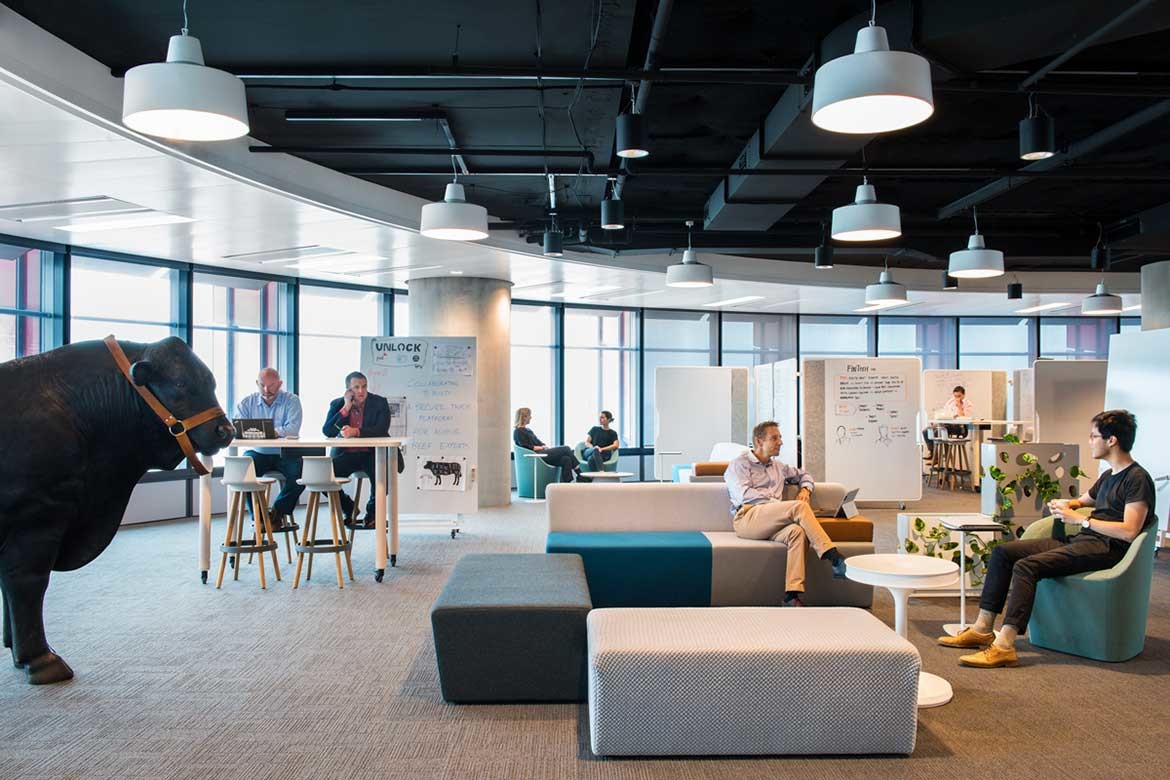
Angela Ferguson is managing and creative director of Futurespace, and co-founder of Future X Collective.
We think you might like this article about Woods Bagot’s design for ABN Perth.
INDESIGN is on instagram
Follow @indesignlive
A searchable and comprehensive guide for specifying leading products and their suppliers
Keep up to date with the latest and greatest from our industry BFF's!

For those who appreciate form as much as function, Gaggenau’s latest induction innovation delivers sculpted precision and effortless flexibility, disappearing seamlessly into the surface when not in use.

London-based design duo Raw Edges have joined forces with Established & Sons and Tongue & Groove to introduce Wall to Wall – a hand-stained, “living collection” that transforms parquet flooring into a canvas of colour, pattern, and possibility.
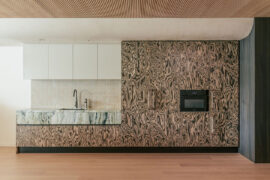
Trust sits at the core of Everton Buildings’ new office, where Ambit Curator was given licence to move beyond convention and deliver a workplace defined by vision, materiality and assured detail.
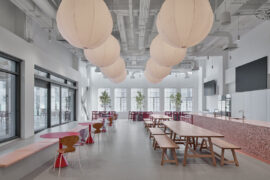
The new headquarters for Omnicom in Melbourne’s CBD sees heritage re-invigorated with style and finesse.
The internet never sleeps! Here's the stuff you might have missed

The World Architecture Festival has named The Holy Redeemer Church and Community Centre of Las Chumberas in La Laguna, Spain as World Building of the Year 2025, alongside major winners in interiors, future projects and landscape.
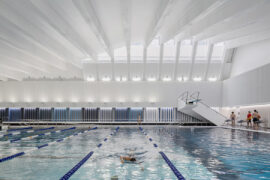
Hiwa, the University of Auckland’s six-storey recreation centre by Warren and Mahoney with MJMA Toronto and Haumi, has taken out Sport Architecture at the 2025 World Architecture Festival. A vertical village for wellbeing and connection, the project continues its run of global accolades as a new benchmark for campus life and student experience.